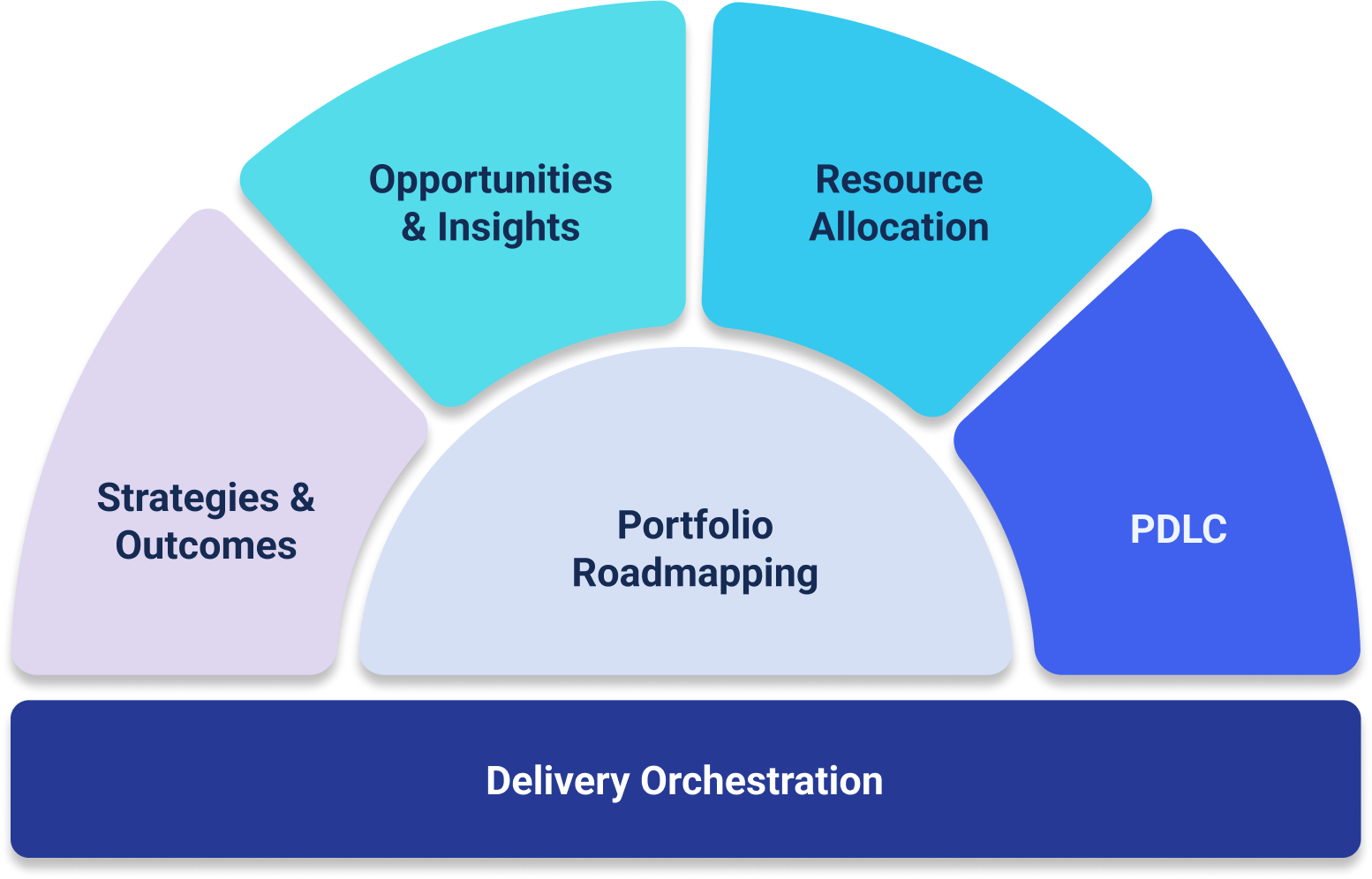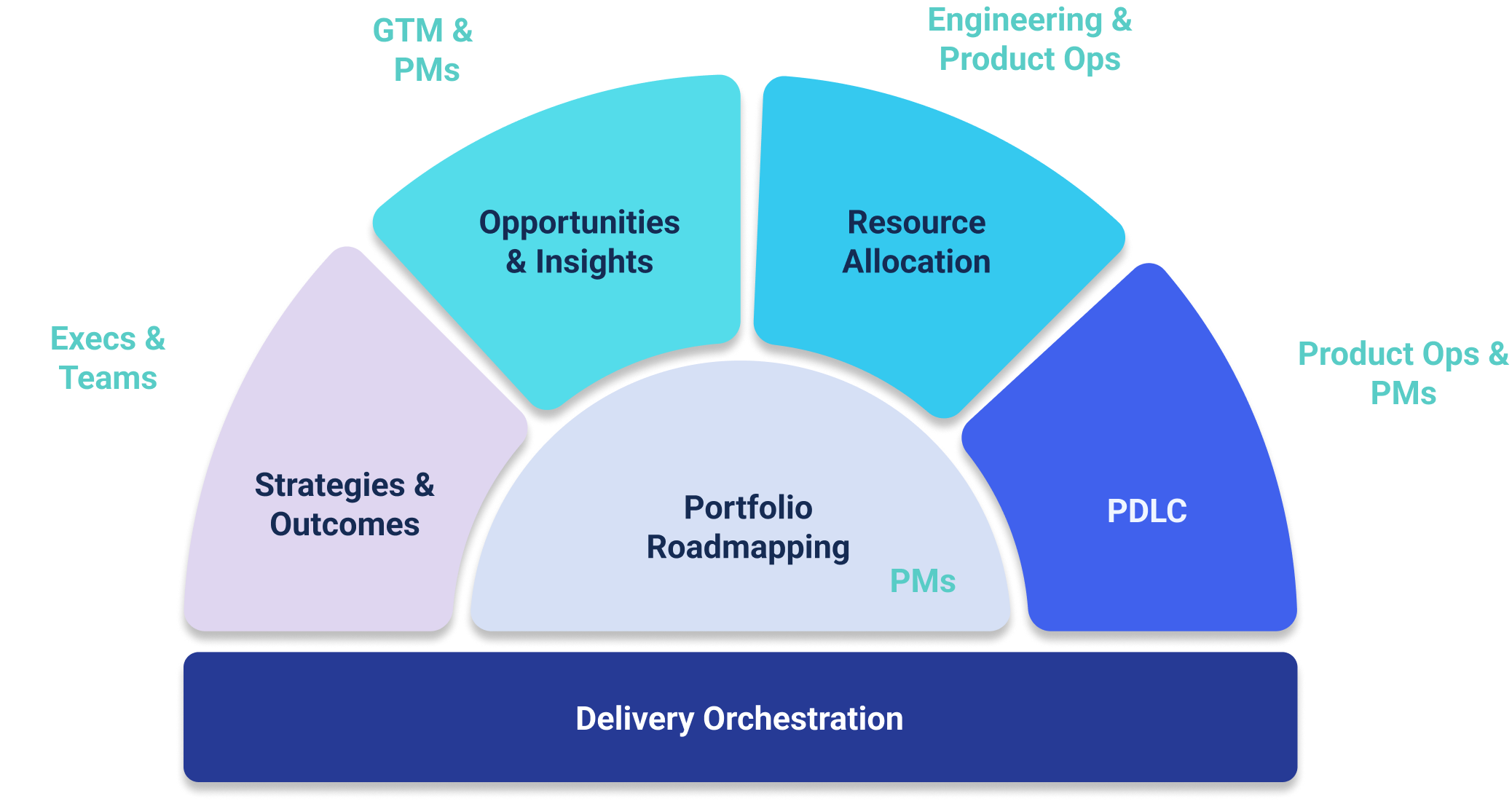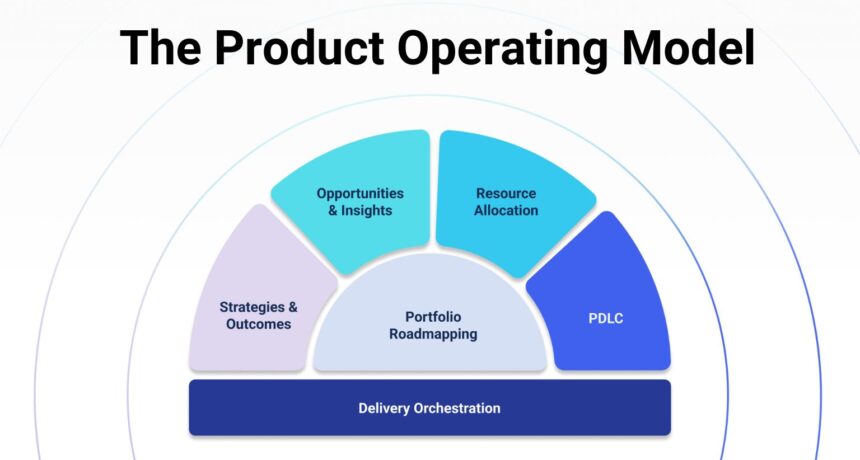What is a Product Operating Model (“POM”)?
A product operating model (POM) reflects how a product organization operates to deliver customer and business outcomes via its product investments. The POM involves many roles that collaborate through a variety of methods (or “cadences”) in an interdependent, non-linear way where the decisions and actions of one role directly impact another.
To help bring further clarity to the topic, let’s hear from these industry voices and how they describe it:
“How we codify the way we translate the business and product strategies into the work getting done.”
– Melissa Perri and Denise Tilles, “Product Operations: How successful companies build better products at scale.”
“[A product operating model] has 3 dimensions… product strategy, product discovery, product delivery.”
– Marty Cagan, “Transformed: Moving to the Product Operating Model (Silicon Valley Product Group)”
”Empowers cross-functional teams from the business or product, engineering, operations, and other functions to work autonomously to create and deliver solutions.”
– Eric Lamarre, “Rewired: The Mckinsey Guide to Outcompeting in the Age of Digital and AI”
As you may see, while there are many ways to describe a product operating model, at its core, there are a series of common themes that emerge. This includes six key elements and involves multiple participants and the interactions between them.
What’s in a POM? The Six Key Elements
- Strategies & Outcomes: Comprised of OKRs, goals, or themes, this element is about defining and deploying strategies and monitoring outcomes. It reflects the main interactions between executives and teams.
- Opportunities & Insights: Commonly referred to as idea management or intake operations, this element is about collecting and evaluating product ideas and investment opportunities.
- Resource Allocation: Also known as capacity management, this element is about planning and managing resource allocation to best achieve outcomes.
- Product Development Lifecycle (PDLC): This element is about the ways of working across the product organization and broader company along the journey from idea to outcome. It involves many functions in an organization, beyond product and engineering.
- Portfolio Roadmaps: This element is all about how cross-product line product roadmaps are created and communicated.
- Delivery Orchestration: A foundational element to it all involves delivering software and other deliverables to enable outcomes.

Although it’s tempting to think that the product organization operates in a fashion moving from the left to the right in this diagram, the reality is that the core of the POM is the product portfolio. Product portfolio roadmaps are influenced (both as inputs and constraints) by the surrounding elements of the POM. And, as mentioned prior, the delivery orchestration element acts as the foundation to ensure all the roadmaps and plans become a reality with any necessary adjustments made along the way.
What Are the Key Roles in a Product Operating Model?
The key differentiating factor of the product operating model versus a project- or delivery-focused product organization (i.e. feature factory) is how the product teams operate.
A feature- or project-based product organization thinks product teams include product, design, and engineering as the main actors, while cross-functional teams and executives are considered “stakeholders.” This is a very limited view because strategies and investments must come from exec teams to guide the organization forward. Furthermore, go-to-market and other business functions need to be involved in all aspects of the design, development, launch, and monetization of a product or other deliverable. The individuals involved are all active participants, not just mere stakeholders getting updates.
The Five Types of Participants in an Effective POM
- Executives: The executive participants, including the Chief Product Officer (CPO), or Head of Product, are the overall owners of the POM.
- Product Operations: These participants orchestrate and optimize the POM to achieve higher Product Operating Excellence.
- Product Managers and Designers: These are the most active participants in a POM.
- Engineering Leaders and Teams: These participants work closely with the product teams.
- Cross-functional teams: These participants can include go-to-market teams (e.g marketing, sales, success, support, biz dev) and other business functions (e.g legal, compliance) also involved in various phases/elements of a POM.
These roles collaborate continuously and interactively through various elements and sets of operating cadences. Here is an illustration of key collaborations between roles.
Note that product managers also need to work with each other to align roadmaps and create synergistic products for their shared customers.

How to Build and Run a Successful Product Operating Model?
An effective product operating model requires frictionless and just-in-time collaboration among all participants. This collaboration occurs across one or multiple key elements in a product operating model, supporting the ways they work at different operating planes (interactions and cadences), and enabling the access of reliable and relevant data in real-time for effective decision-making.
In order to accomplish this, spreadsheets and point solutions are no longer adequate. How could you win the war using the Pony Express to communicate while your competitors are using satellite communications? It’s imperative to centralize the orchestration of your product operating model on a single platform.
Not sure where to start? Look no further than Dragonboat.
How Dragonboat Can Help
Dragonboat is the only modern AI-powered strategic portfolio management platform purpose-built for making effective product portfolio decisions and delivering customer and business outcomes. With a dynamic platform, on-demand help from our in-house product operations experts, and a thriving community of product operators, we can meet you where you are today in your product operating excellence, and help you evolve your approach over time. Check out a quick overview video here.
Ready to get started? Book a demo today!
Categories
Articles | Product Leadership | Product Operating Model | Product Operations
Share on Social



